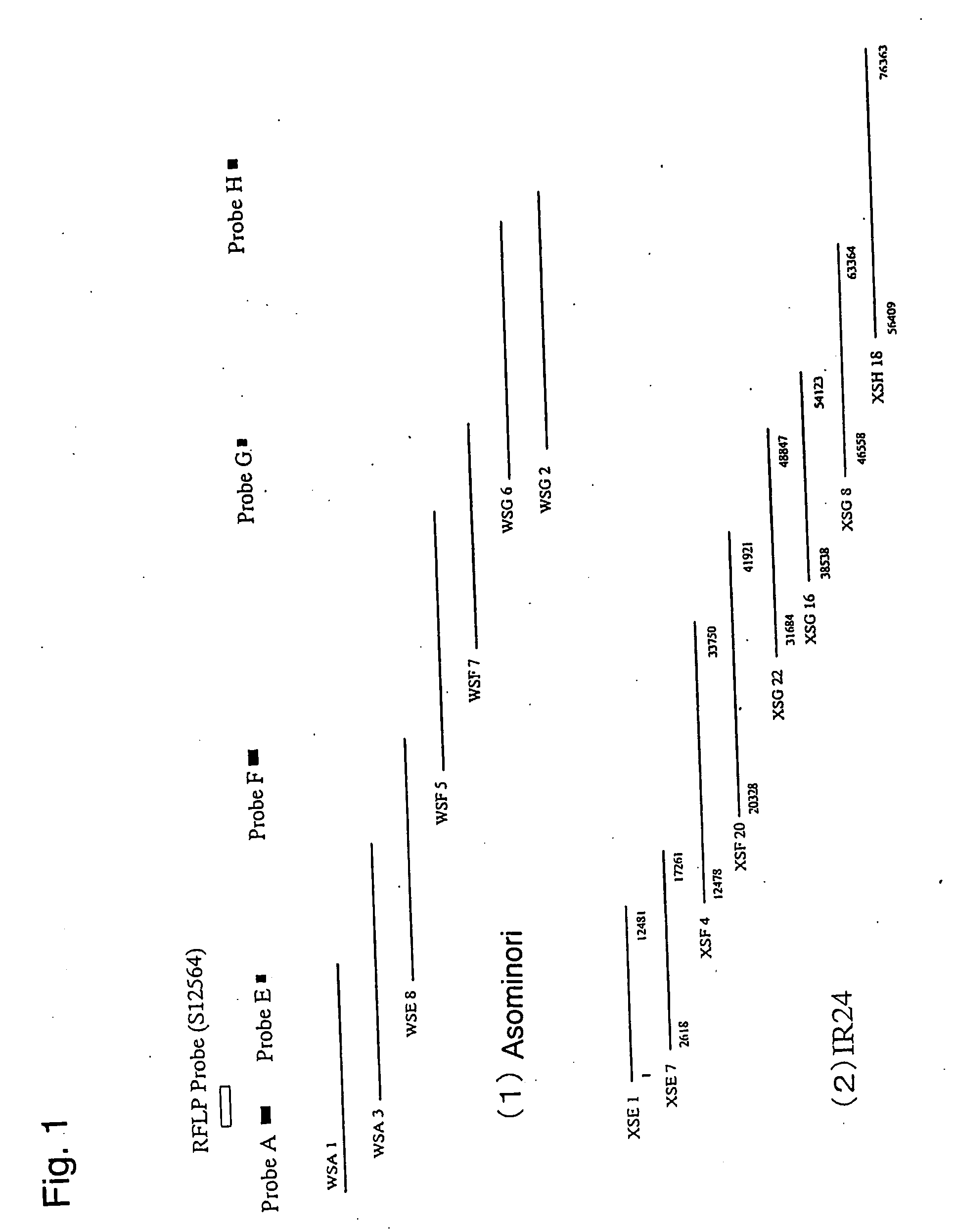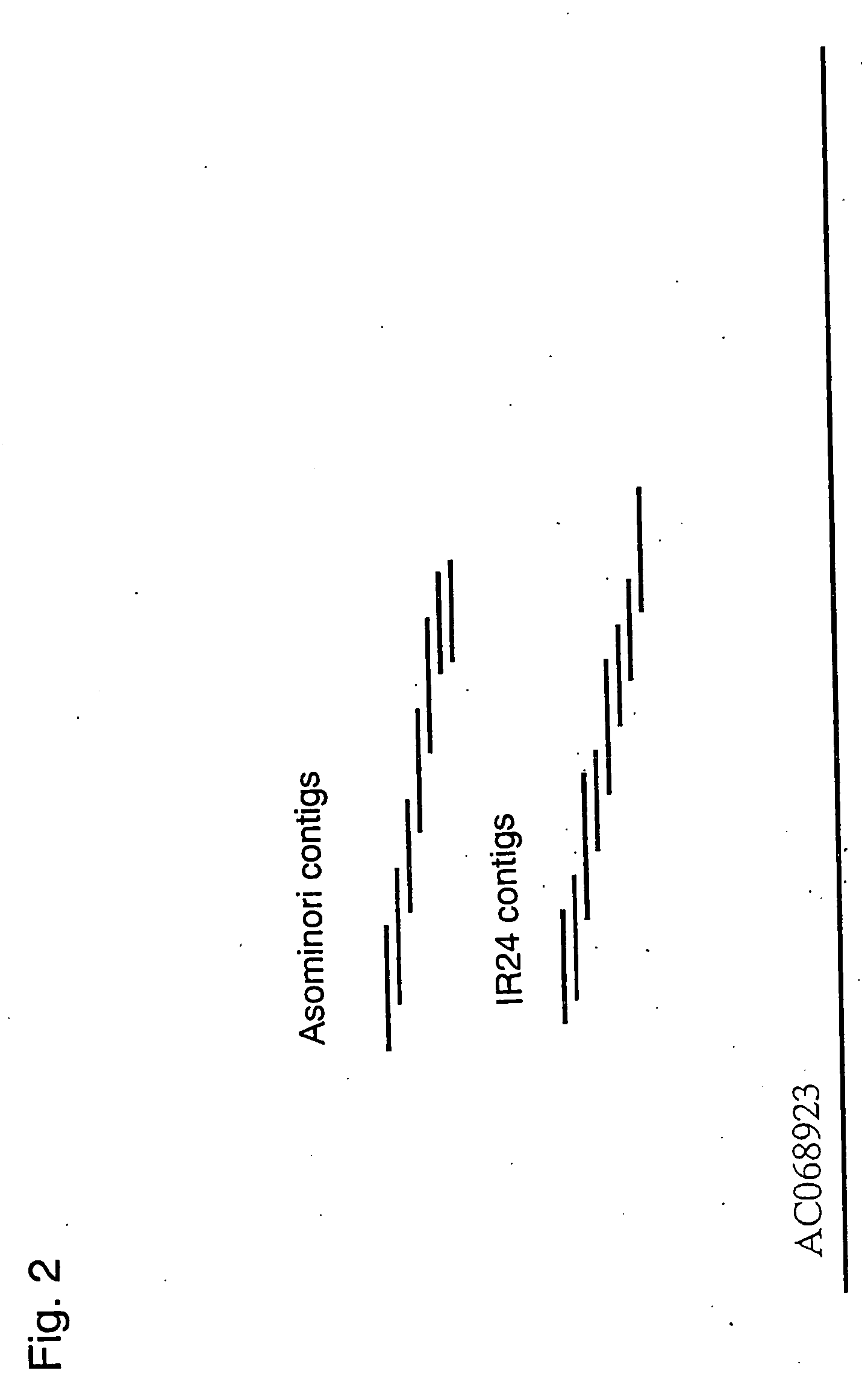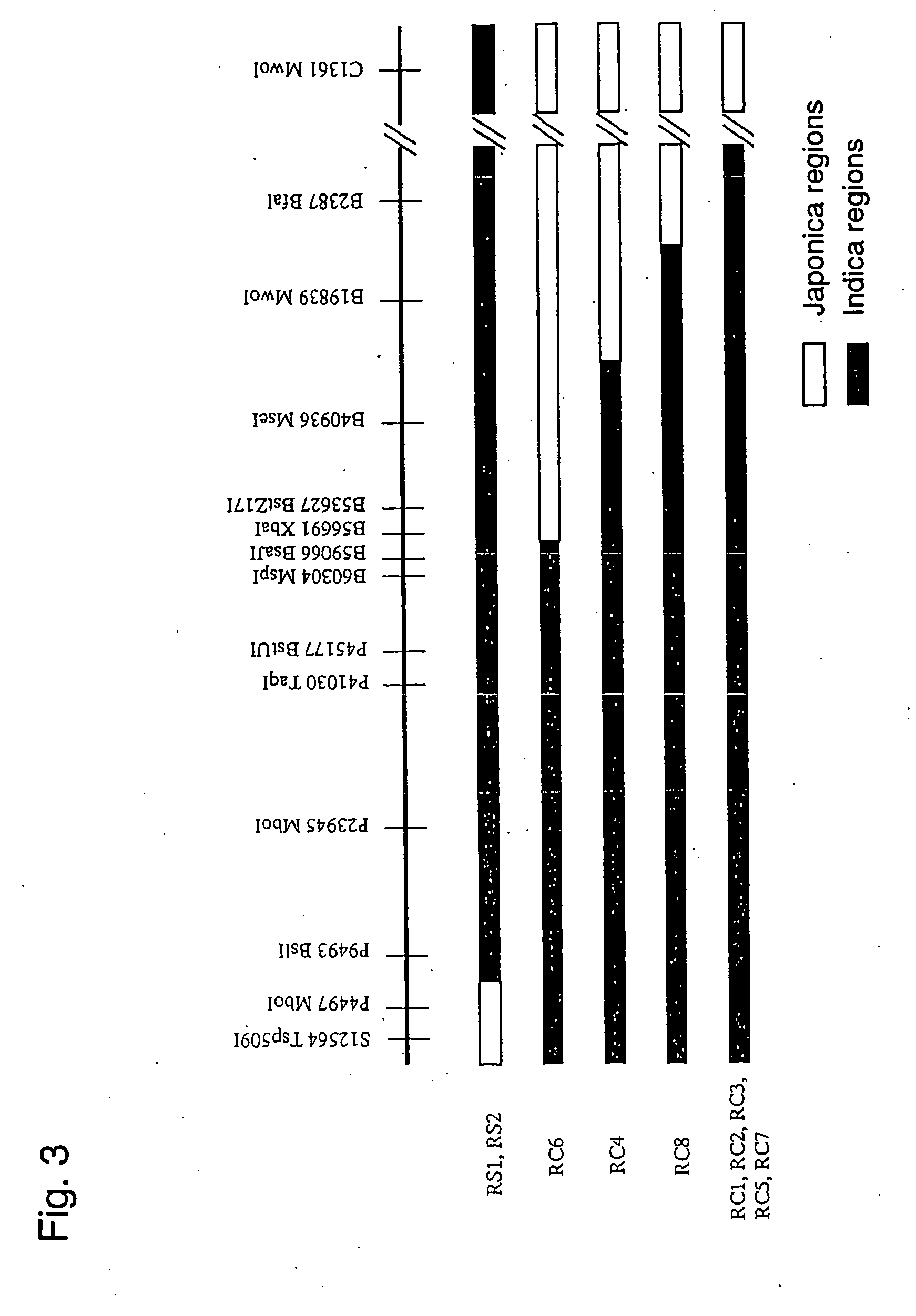Method of imparting or controlling fertility with the use of fertility restoring gene for rice bt-male sterility cytoplasm and method of judging the existence of fertility restoring gene
a technology sterility cytoplasm, which is applied in the field of imparting or controlling fertility with the use of fertility restoring gene for rice bt-male sterility cytoplasm and the method of judging the existence of fertility restoring gene, can solve the problems of inability to accurately genotype the locus of rf-1 gene, unsuitable manual crossing method, and inability to produce large quantities, etc., to inhibit the function of rf-1 gene, restore fertility
- Summary
- Abstract
- Description
- Claims
- Application Information
AI Technical Summary
Benefits of technology
Problems solved by technology
Method used
Image
Examples
reference example 1
Conversion of RFLP Markers Around Rf-1 Gene to PCR Markers
[0232] In this reference example, nine RFLP markers (i.e., R1877, G291, R2303, S12564, C1361, S10019, G4003, S10602 and G2155) around the locus of Rf-1 gene were converted to PCR markers.
(1) Materials and Methods
[0233] The following nine RFLP markers, R1877, G291, R2303, S12564, C1361, S10019, G4003, S10602 and G2155, were purchased from the National Institute of Agrobiological Sciences, the Ministry of Agriculture, Forestry and Fisheries of Japan. After determining the base sequences of the inserts in the vectors, experiments were conducted according to the following procedures. Among rice varieties herein, Asominori belongs to japonica, and IR24 belongs to indica.
(2) Preparation of Asominori Genomic Library
[0234] Total DNA was extracted from green leaves of Asominori by the CTAB method. After partial digestion with MboI, the DNA was fractionated according to size by NaCl density gradient centrifugation (6-20% linear ...
reference example 2
Mapping of Rf-1 Gene Locus
[0263] DNA was extracted from 1042 seedlings of the F1 population produced by pollinating MS Koshihikari with MS-FR Koshihikari, and the DNA extract was used in the analysis. MS Koshihikari (generation: BC10F1) was created by replacing the cytoplasm of Koshihikari with BT type male sterility cytoplasm. MS-FR Koshihikari was a line created by introducing Rf-1 gene from IR8 (supplied from National Institute of Agrobiological Sciences) into MS Koshihikari (the locus of Rf-1 gene being heterozygous).
[0264] First, each individual was investigated for the genotype at two marker loci R1877 EcoRI and G2155 MwoI described in Reference example 1 that would presumably be located on opposite sides of the locus of Rf-1 gene. Japonica type homozygotes with respect to either locus R1877 EcRI or G2155 MwoI were regarded as recombinants between these two marker loci. Then, each of such recombinants was investigated for the genotypes of G291 MspI, R2303 BslI, S12564 Tsp 50...
example 1
Acquisition of Recombinant Individuals Proximal to the Rf-1 Locus
(Materials and Methods)
[0267] DNA was extracted from each of 4103 individuals of BC10F1 population produced by pollinating MS Koshihikari (generation: BC10F1) with MS-FR Koshihikari (generation: BC9F1, heterozygous at the Rf-1 locus), and genotyped at the S12564 Tsp509I and C1361 MwoI loci in the same manner as described in Reference example 2 above. Individuals having a genotype homozygous for Koshihikari at the S12564 Tsp509I locus were regarded as those generated by recombination between the Rf-1 and S12564 Tsp509I loci, while individuals having a genotype homozygous for Koshihikari at the C1361 MwoI locus were regarded as those generated by recombination between the Rf-1 and C1361 MwoI loci.
(Results and Discussion)
[0268] A survey of 4103 individuals revealed one recombinant individual between the Rf-1 and S12564 Tsp509I loci and 6 recombinant individuals between the Rf-1 and C1361 MwoI loci. The previous surv...
PUM
| Property | Measurement | Unit |
|---|---|---|
| Fraction | aaaaa | aaaaa |
| Length | aaaaa | aaaaa |
Abstract
Description
Claims
Application Information
 Login to View More
Login to View More - R&D
- Intellectual Property
- Life Sciences
- Materials
- Tech Scout
- Unparalleled Data Quality
- Higher Quality Content
- 60% Fewer Hallucinations
Browse by: Latest US Patents, China's latest patents, Technical Efficacy Thesaurus, Application Domain, Technology Topic, Popular Technical Reports.
© 2025 PatSnap. All rights reserved.Legal|Privacy policy|Modern Slavery Act Transparency Statement|Sitemap|About US| Contact US: help@patsnap.com



